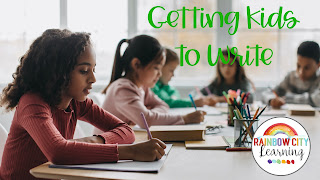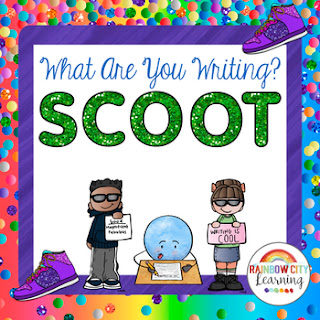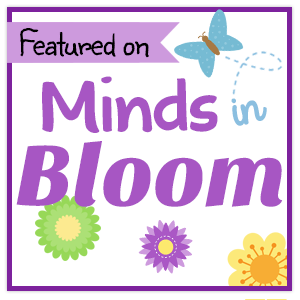I've joined a new book club, and the discussion this week was mind-blowing! We were discussing The Secret Keeper of Jaipur (sequel to The Henna Artist) by Alka Joshi, and our leader informed us at the end that this author's first book was written when she was fifty-one years old! Given that our group was comprised of women of that age and older, that information caused our discussion to veer in a new direction. When the member seated next to me pointed out that there are "so many ideas floating around out there", I grabbed her arm (gently, of course...), and said, "BIG MAGIC!" All was suddenly quiet. All eyes on me, the new girl. Undaunted, I repeated, "Big Magic by Elizabeth Gilbert!" Blank faces. "You know," I went on. "The author of Eat,Pray,Love. She also wrote a book about imagination and how ideas find us." A little more interest. (Several teachers in the group.) I continued, "She said exactly what Christina just said, that ideas are free-floating in the universe, and they find us if we are open to it. If we allow the ideas to find us, we can do or write about almost anything. My friends know that I call this phenomenon 'Blog Fairies' whenever I sit down to write a blog post."
Where Do Ideas Begin?
I love to read about and listen to interviews with my favorite writers. The common element that I have found in all of this drilling down on their creative process is the quiet surroundings and sitting with their thoughts. Just being quiet and allowing the ideas to find you. If you do research about a favorite author of yours or of your students, you will find a regular person who stood still long enough for an idea or two to find them.
I currently have two hardcover copies of Big Magic, a Kindle edition, and an audio version. I refer to them alllll the time. If you only read one chapter, try the one about the time that the very same idea had approached both Elizabeth Gilbert and Ann Patchett. Elizabeth ignored it because she was busy with something else, and Ann wrote the book! Read about how they discovered this secret of the universe as it affected them both. The chapter is titled "WTF?" because you know... how could this be? It happened!
Teacher friends, this concept can so easily be applied to our classroom practice. Even the most reluctant writers can be drawn in with this magical idea. Believe what you will, but something in the universe or within each of us as humans, offers ideas and opportunities on a regular basis. We choose, whether consciously or unconsciously, to tune in or tune out. We can bring this idea into our classrooms to get the writing started and to keep it going. This is no cookbook plan on how to teach writing step by step, but rather some suggestions for creating a community of writers within your classroom.
Authors Lead the Way
Author Kristen Hannah today on her FB page: "Honestly, it's always kind of a surprise to find that I can write a book!"
Author Jodi Picoult on what to write: "...for many years, I had to squeeze in my work around child care schedules, and that made me develop a very firm discipline. I write quickly, but I also do not believe in writer’s block, because once I didn’t have the luxury of believing it. When you only have twenty minutes, you write - whether it’s garbage, or it’s good… you just DO it, and you fix it later."
Natalie Kinsey Warnock, author of Gifts From the Sea: "Every family has stories that are too good to be forgotten, stories that need to be written down and told and passed on to the next generations." My favorite memory of an author interview with this author was when she held my students and me spellbound with her sharing of how she came to write Gifts From the Sea. She was in her studio, working on another book. Quila, a character in Gifts From the Sea, kept showing up as a voice in her ear saying. "Tell my story. Tell my story." Over and over, until she could ignore it no longer. As she put down her other work, closed her eyes, and sat with the quiet, Quila's story was revealed to her and became a longtime favorite book for the middle grades.
Beloved children's author Patricia Polacco describes her family members as marvelous storytellers. "My fondest memories are of sitting around a stove or open fire, eating apples and popping corn while listening to the old ones tell glorious stories about their homeland and the past. We are tenacious traditionalists and sentimentalists.... With each retelling our stories gain a little more Umph!"
From my current literary obsession, Black Cake: Author Charmaine Wilkerson created this novel from thoughts about a cow shaped potholder, a blue pie plate, and an old family recipe given to her by both sides of her fractured family situation growing up. "One’s sense of family and home may shift over time, but it remains embedded in our hearts and our sense of self wherever we go."
Author Joyce Maynard leads writer's retreats several times a year at her beautiful home on Lake Atitlan in Guatemala. These are memoir writing workshops for people who have never tried to write a book, but want to explore what they have inside them. When asked in an interview about the sequel she's currently writing to her newest book, Count the Ways, she said that she can't wait to find out what's in store for one of the characters in the first book! What?!? She can't wait?!? Isn't she the author? But what she is telling us is the same thing others have said, that the characters reveal themselves to the writer much like they do to the reader. Jodi Picoult describes it as a movie playing out in her head.
Lessons for Our Young Authors
I could go on and on (probably already have!) about thoughts from my favorite authors, but here are some takeaways that I think will be helpful in our classrooms:
- Be still and quiet and allow ideas, floating around like butterflies, to land on you.
- Start with a word, a drawing, or even a scribble. Just touch a pencil to paper or place your fingers on the keyboard, and begin.
- Tell your own stories and stories you've heard in your family.
- Start with a favorite favorite family recipe or artifact like a quilt and tell its story or a related one.
- Let the story lead you, and let the characters take you where they want to go.
Shhhh.... It's a quiet party! Try creating an oasis of peace and quiet when writing time arrives. Play some soft music as an invitation to gather materials and find a quiet writing space. Some days, just give kids a quiet room, a favorite spot, and then the gift of some time to write. Some days, try an activity or game to get the juices flowing. Some activities to try:
- The never-ending story. Start with a first sentence and pass a talking stick or ball or whatever around as each kid in turn adds the next line. You will want to video or record these! Many are keepers!
- The quick write. Give a prompt and and allow a timed response time. Anything from 4 to 10 minutes. As Jodi Picoult says, just write! Even if you think it's garbage. It can always be revised later. It's fun to record the number of words written each time, and see the growth!
- A picture or quilt square about a family story or tradition.
- Start with sharing a favorite food or recipe.
- Allow kids to talk about all of this at times. No writing. Just talking. It will inspire later attempts!
- Free write time. Only rule is that you have to keep writing, no matter what you are writing.
- Daily journals. I can't recommend this enough. So important! Kids can mine these for story ideas later on. When they don't feel that they can write, let them draw!
If I can do anything else to help make your job easier this year, please let me know in the comments below! If I use your idea for a new blog post, you will win a TpT $10 gift card. If I create a new resource for Rainbow City Learning based on your idea, you will win a free copy of that resource to use in your classroom! (Note: all comments are reviewed before appearing on my blog. It may take a few hours for your comment to appear! Thanks for your patience!)






















